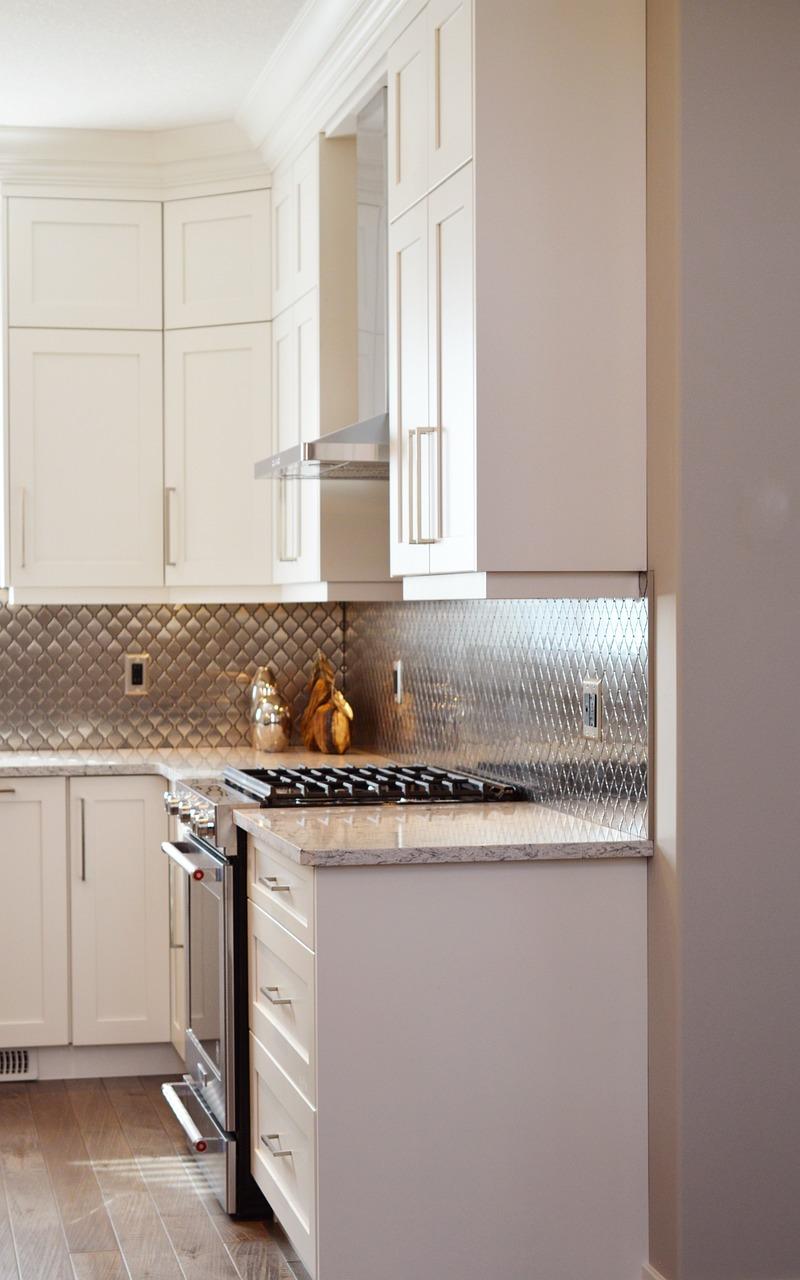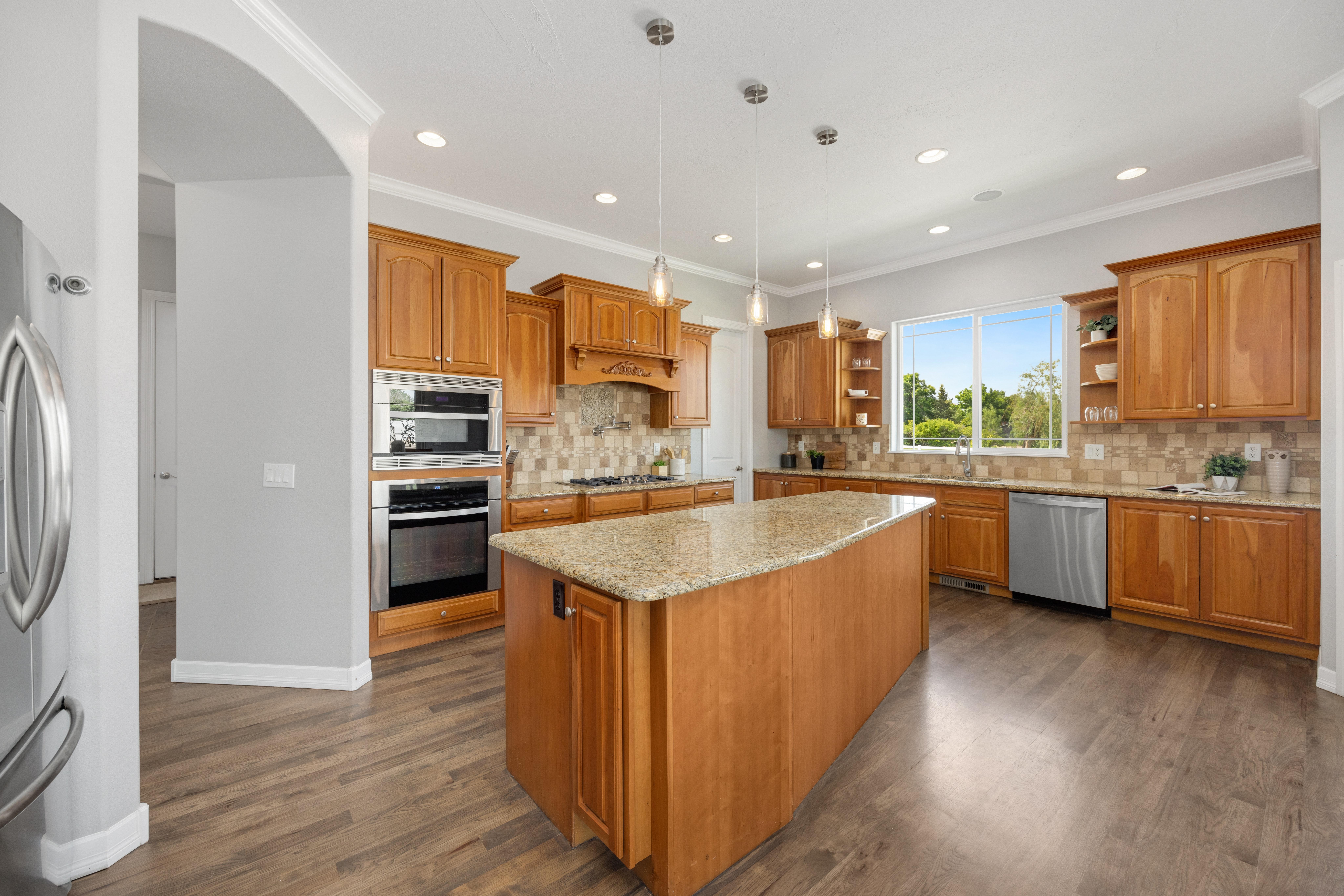If you’ve recently installed new kitchen cabinets or are renovating your kitchen, you may encounter the challenge of bridging the gap between your cabinets and backsplash. This small but noticeable space can be a source of frustration, as it can allow dirt and moisture to accumulate and mar the overall aesthetic of your kitchen. So, what can you do to address this gap and achieve a seamless look?
In this blog post, we’ll explore various techniques and options to help you fill the gap between your kitchen cabinets and backsplash. From using caulk and trim molding to fixing an uneven countertop, we’ve got you covered. Whether you’re a DIY enthusiast or a homeowner seeking professional guidance, these tips will assist you in creating a clean and polished finish for your kitchen. So, let’s dive in and find the perfect solution for filling that bothersome gap!
How to Seamlessly Bridge the Gap Between Your Kitchen Cabinets and Backsplash
So, you’ve gone through the exciting process of choosing new kitchen cabinets and a stunning backsplash to give your kitchen a fresh, updated look. But as you stand back and admire your handiwork, you notice an unsightly gap between the cabinets and the backsplash. Don’t fret! In this guide, we’ll walk you through some creative ways to fill that gap and achieve a seamless, polished look.
Embrace Caulk – The Unsung Hero of Kitchen Makeovers
Caulk might not be the most glamorous tool in your kitchen renovation arsenal, but it’s a game-changer when it comes to filling that pesky gap. Invest in a high-quality caulk that matches the color of the cabinets or the backsplash, depending on your desired aesthetic. Apply a thin, even line of caulk along the gap, gently smoothing it with your finger or a caulk smoothing tool. Voila! Watch that gap disappear like magic.
Get Crafty with Trim – Jazz It Up!
If you want to take your gap-filling game to the next level, consider using trim to add a touch of elegance and finesse. Choose a trim that complements your kitchen cabinets and backsplash, whether it’s a sleek and modern design or a more traditional, ornate style. Install the trim along the top edge of the cabinets, covering the gap and seamlessly connecting them to the backsplash. With a little bit of creativity, you can turn that gap into a design feature that adds character and charm to your kitchen.
Play with Tiles – Mix, Match, and Fill the Gap
Who says your backsplash has to stop at the bottom edge of your cabinets? Take advantage of the gap and extend your tile design to create a cohesive look. Choose tiles that match or coordinate with your existing backsplash and carefully measure the gap. Cut the tiles to size and install them vertically, filling the gap between the cabinets and backsplash. Not only will this fill the space seamlessly, but it’ll also give your kitchen a unique focal point and make a bold design statement.
Think Outside the Box – Be Bold, Be Creative
Sometimes rules are meant to be broken, and this applies to kitchen design too. Don’t be afraid to think outside the box and explore unconventional ways to fill the gap between your cabinets and backsplash. Consider using a vibrant wallpaper or an eye-catching patterned fabric to cover the space. Or, if you’re feeling adventurous, create a mini herb garden or display shelf with plants and decorative trinkets. The possibilities are endless when you unleash your creativity!
Tackle the Gap – Your Kitchen’s Unsung Hero
Filling the gap between kitchen cabinets and backsplash might seem like a daunting task, but with the right approach and a touch of creativity, you can transform it into an opportunity for design greatness. Whether you opt for caulk, trim, tiles, or unleash your imagination with unconventional ideas, rest assured that your kitchen will look seamlessly polished and absolutely fabulous. So go ahead, conquer that gap, and give your kitchen the attention it deserves!
FAQ: How Do You Fill the Gap Between Kitchen Cabinets and Backsplash
Welcome to our comprehensive FAQ guide on filling the gap between kitchen cabinets and backsplash! In this informative and entertaining subsection, we’ll answer all your burning questions and provide practical solutions to ensure your kitchen looks sleek and polished. So let’s dive right in!
Do You Leave a Gap Between Countertop and Backsplash
Yes, it’s important to leave a small gap between the countertop and backsplash. This allows for expansion and contraction due to temperature changes or movement in the house. Typically, a 1/8-inch gap should suffice to accommodate any shifting without compromising the overall aesthetic of your kitchen. Don’t worry; we’ll show you how to conceal this gap later!
How Do I Hide the Gap Between My Kitchen Cabinets and Dishwasher
Ah, the notorious gap between cabinets and dishwashers! Fear not, we have a simple solution. You can use flexible silicone caulk to fill this gap, ensuring a seamless appearance. Remember to use a caulk color that matches your cabinets or dishwasher to create a cohesive look. It’s like giving your kitchen a little facelift!
How Do You Hide an Uneven Countertop
An uneven countertop can be pretty annoying, but fret not, we have an effective trick up our sleeves! You can use a self-leveling epoxy to fill in the gaps and create a smooth surface. This miracle product will not only give your countertop a sleek finish but also restore your faith in the wonders of modern technology!
Where Do You Start When Installing Backsplash
Starting a backsplash installation can be a bit overwhelming, but we’ve got your back! Begin by finding the center point of your wall and mark it. Then, use a level and draw a straight line from the bottom to the top, starting at this center point. This will serve as your guide to ensure your backsplash is perfectly aligned. Now you’re ready to unleash your inner DIY warrior!
Do Painted Cabinets Crack
Nobody wants to see their beloved cabinets crack, right? Don’t worry; properly painted cabinets shouldn’t crack under normal circumstances. However, it’s crucial to prep your cabinets correctly before painting, ensuring they are clean, sanded, and primed. Also, choose a high-quality paint that is suitable for cabinets. Treat them with care, and they’ll stay crack-free for years to come!
What Is Backsplash on Countertop
Ah, the beautiful backsplash! It’s the stylish, protective barrier between your countertop and the wall. Not only does it add a touch of pizzazz to your kitchen, but it also acts as a shield against splashes and stains. From mosaic tiles to classic subway designs, the possibilities for your backsplash are as endless as your imagination!
Should Caulking Match Countertop or Backsplash
When it comes to the perfect caulk match, it’s best to stick with the backsplash. Matching the caulk color to your backsplash helps create a more cohesive and seamless look. By doing so, you’ll achieve a polished finish that even the toughest critics will envy. So let those colors blend harmoniously, just like the ingredients in your favorite recipe!
How Do You Close a Gap Between a Wall and Vanity
Ah, the pesky gap between the wall and vanity – a notorious hideout for dust bunnies and lost socks! But fear not! You can easily fill this gap with a bead of silicone caulk. Make sure to choose a caulk color that matches your vanity for a seamless and visually appealing solution. Say goodbye to those sneaky dust bunnies!
How Do You Seal a Gap Between Cabinets and Walls
To seal that bothersome gap between cabinets and walls, grab a tube of silicone caulk and get ready to work your magic! Run a bead of caulk along the joint where the cabinet meets the wall. Use a caulk color that blends well with your cabinets, and voila – you have successfully sealed the deal and created a seamless kitchen masterpiece!
Should I Caulk My Cabinets Before Painting
Absolutely! Caulking your cabinets before painting is a crucial step in achieving a professional and polished finish. It helps fill any gaps or cracks, creating a seamless surface for your paint. So grab your caulk gun and fill those gaps like a pro, ensuring your cabinets are ready to shine in their new, vibrant colors!
How Do You Fill the Gap Between Granite and Backsplash
When it comes to the gap between granite countertops and the backsplash, we have a trusty solution for you. Use a color-matching silicone caulk and apply it along the gap, ensuring a smooth and seamless transition. Not only will this hide any imperfections, but it will also add that final touch of elegance to your kitchen ensemble!
Why Are My Kitchen Cabinets Cracking
Oh no, cracked cabinets are never a pleasant sight! Several reasons can cause this unfortunate phenomenon, such as fluctuating humidity levels or poor-quality materials. To prevent cracking, ensure proper ventilation in your kitchen and invest in high-quality cabinets that can withstand the test of time and culinary adventures. Remember, happy cabinets equal a happy cook!
Do You Grout the Bottom of a Backsplash
Here’s a pro tip for you – grouting the bottom of your backsplash is not necessary! Since the bottom row of tiles often sits directly on the countertop, grout can easily crack due to movement. Instead, opt for a bead of caulk to seal the bottom edge, ensuring flexibility and a clean finish. It’s all about striking the perfect balance between style and practicality!
Should Granite Countertops Be Caulked
Good question! Granite countertops do not require caulking along the edges. However, it’s crucial to ensure there are no gaps between the countertop and the walls or cabinets. In case of any gaps, filling them with a color-matching silicone caulk is the way to go. This will not only prevent water damage but also maintain the beauty and integrity of your granite masterpiece!
Should You Caulk Cabinets
Indeed! Caulking cabinets is an essential step in achieving a professional and polished look. It helps fill any gaps or seams between cabinets, creating a seamless surface. Additionally, caulking prevents dust and debris from accumulating in those hard-to-reach crevices and creates a finished appearance that will make your kitchen feel complete. Let’s caulk those cabinets like there’s no tomorrow!
Should You Do Backsplash or Countertop First
Ah, the chicken or the egg dilemma – backsplash or countertop first? It’s always better to install the countertop before tackling the backsplash. This way, the countertop serves as a solid foundation for your backsplash, ensuring a seamless connection. So, let’s start from the bottom up and build your dream kitchen, one tile at a time!
How Do You Hide Seams Between Cabinets
To hide seams between cabinets with finesse, you’ll need a little help from our dear friend, wood filler! Apply the wood filler to the seam, smooth it out, and let it dry. Once it’s dry, sand the area to blend it seamlessly with the surrounding wood. Finish it off with paint or stain to match your cabinets, and those seams will practically disappear into thin air!
Are You Supposed to Caulk Around Backsplash
Absolutely! Caulking around your backsplash is an essential step to ensure water resistance and keep those hard-to-reach areas clean. Use a color-matching silicone caulk to apply a neat bead along the edges and any gaps between the tiles. This final touch ensures your backsplash stays beautiful and functional for years to come. Let’s seal the deal, shall we?
That concludes our FAQ section on filling the gap between kitchen cabinets and backsplash. We hope we’ve addressed all your concerns and tickled your funny bone along the way! Remember, a seamless kitchen not only looks incredible but also makes your culinary adventures all the more enjoyable. Happy caulking and tiling!

